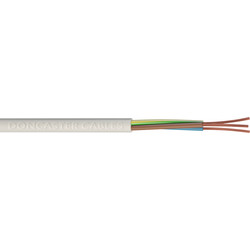Hello everyone,
I need to supply power from an A/C wall plug to an enclosure containing 2 power supply units.
These are:
1 - Switching Power Supply INPUT 100-240v 3.0A / OUTPUT 5v = 40A --> connected to LED lights
2 - Power Supply Unit INPUT 100-240v 1.5A / OUTPUT 5v = 10A --> connected to microcontroller
I calculated that together they won't take more than 300Watts
The cable I will use is 3.5mts, it will have one UK plug on one end (with 13A fuse) and be connected to an electrical box.
And from there spliced to the 2 PSUs with WAGO terminal blocks.
Can I use one with the following specs:
Cross Sectional Area 1.50mm²
Material: VR Insulated / Though rubber sheath
3 cores
Voltage Rating: 300 / 500V
Thanks a lot for your time and for helping!!!
Marcus
I need to supply power from an A/C wall plug to an enclosure containing 2 power supply units.
These are:
1 - Switching Power Supply INPUT 100-240v 3.0A / OUTPUT 5v = 40A --> connected to LED lights
2 - Power Supply Unit INPUT 100-240v 1.5A / OUTPUT 5v = 10A --> connected to microcontroller
I calculated that together they won't take more than 300Watts
The cable I will use is 3.5mts, it will have one UK plug on one end (with 13A fuse) and be connected to an electrical box.
And from there spliced to the 2 PSUs with WAGO terminal blocks.
Can I use one with the following specs:
Cross Sectional Area 1.50mm²
Material: VR Insulated / Though rubber sheath
3 cores
Voltage Rating: 300 / 500V
Thanks a lot for your time and for helping!!!
Marcus


 ))
))








